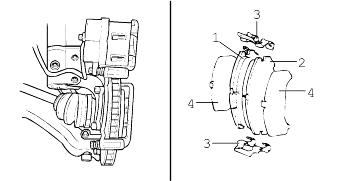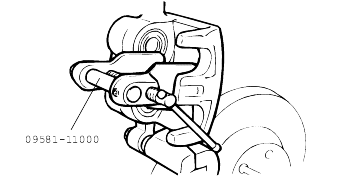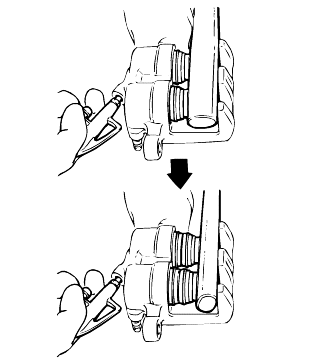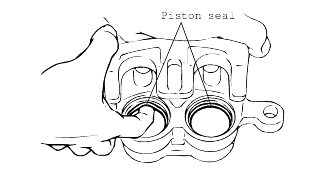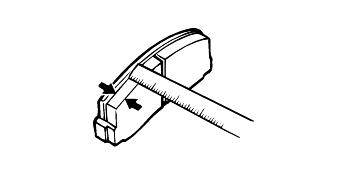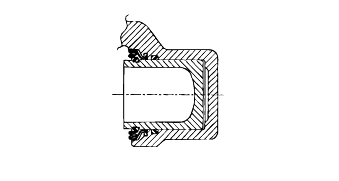Check the brake pad thickness through the caliper body inspection hole.
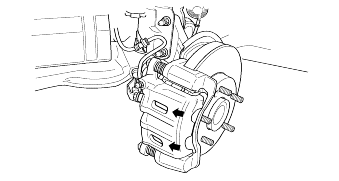
ITEM | Standard value | Service limit |
Pad lining thickness mm (in.) | 10.0 (0.39) | 2.0 (0.08) |
If the pad lining thickness is out of specification, left and right pads must be replaced as a complete set.
When the thickness difference between the left pad and the right pad is large, check the sliding condition of the piston, the lock pin andthe guide pin.

